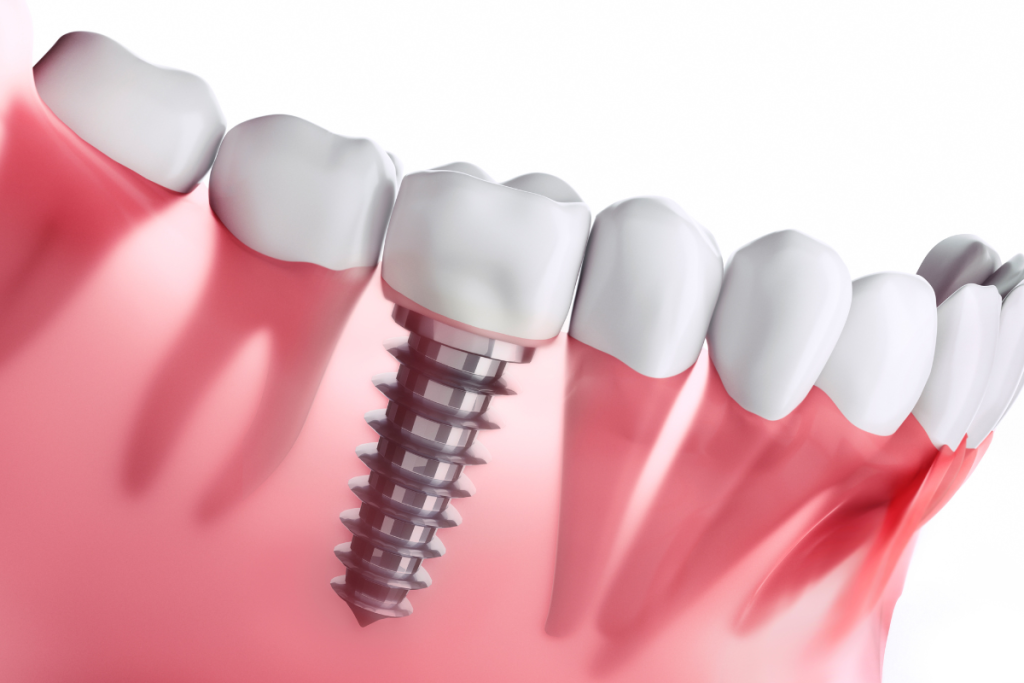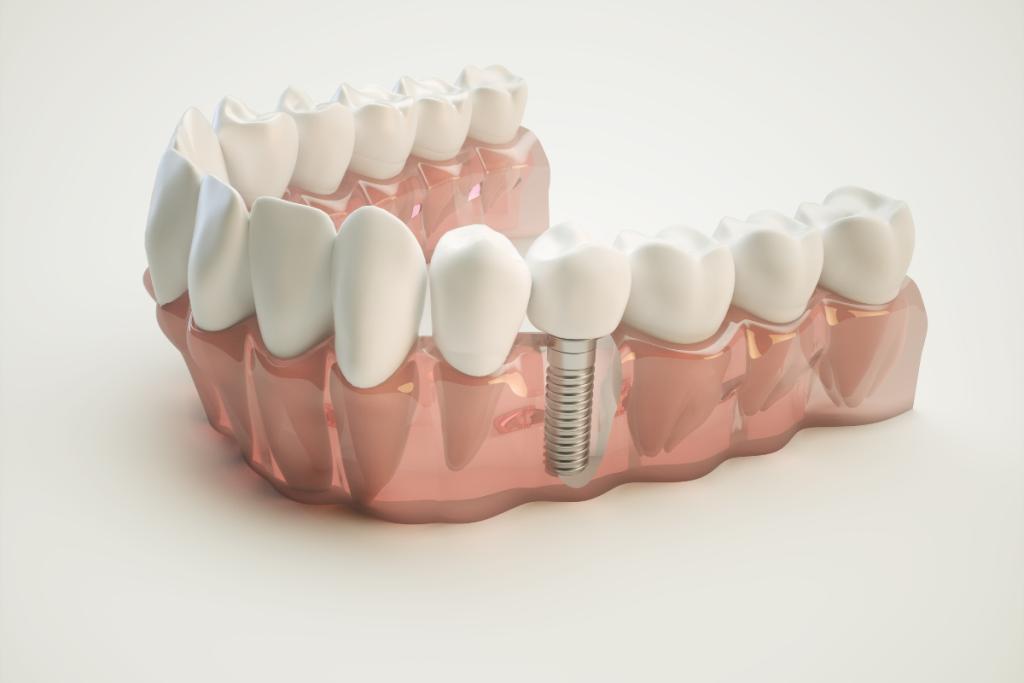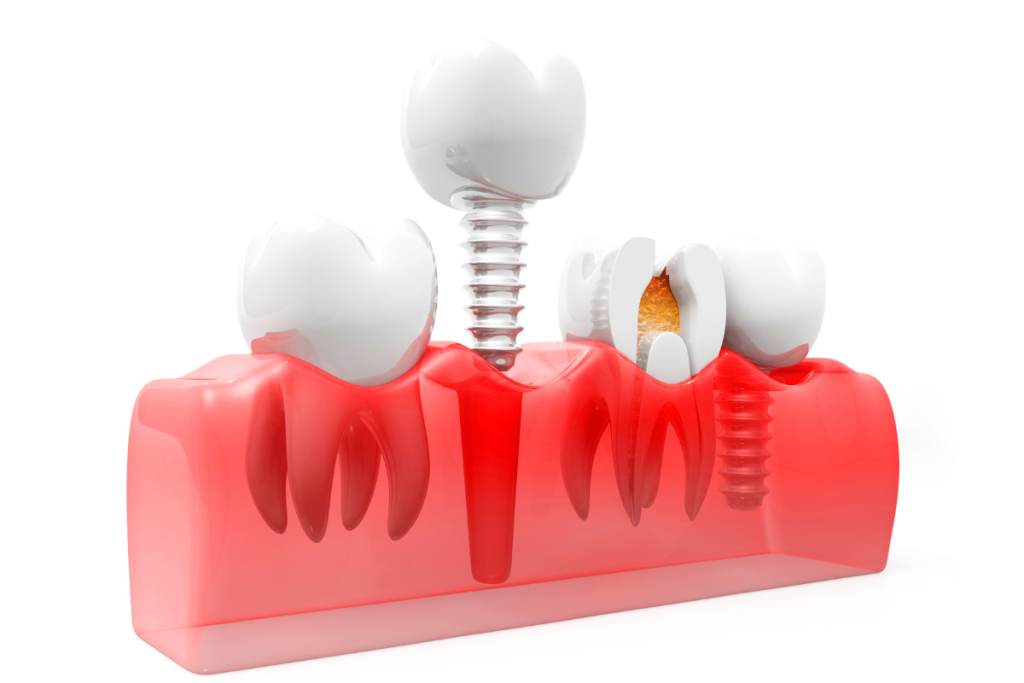When you think of replacement teeth options, dental implants are probably the first thing that comes to mind. But what if you don’t want or can’t get implants? Don’t worry. There are plenty of other tooth replacement options available.
This guide will introduce you to some of the most popular dental implant alternatives and help you decide which is best for you. So whether you’re considering dental implants or looking for alternative treatments, read on to learn more!
What are Dental Implants?

Dental implants are artificial replacements for natural teeth. They are usually made of titanium, a metal well-tolerated by the human body.
Dental implants are an increasingly popular option for people with tooth loss. Those who have lost one or more teeth due to injury, disease, or aging can benefit from dental implants.
Dental implants come in three different forms:
- Endosteal implants: These are the most common form of dental implants. They are surgically placed into the jawbone and once in place, they serve as a base for artificial teeth replacements.
- Subperiosteal implants: These are placed on top of the jawbone beneath the gum tissue. They are a suitable option for people who do not have enough healthy jawbone to support endosteal implants.
- Zygomatic implants: These are placed in the cheekbones instead of the jawbone. This is the least common form of dental implant.
The three types of dental implants are:
- Single-Tooth Implant: These are used to support a single artificial tooth.
- Multi-Tooth Implants: These are used to support two or more adjacent teeth. They are also known as “bridges”.
- Full Mouth Implants: These are also called implant-retained dentures, implant-supported dentures, or full arch implants. These are used to support an entire set of artificial teeth.
What Are the Benefits of Dental Implants?
Easy Maintenance
Long-Lasting
Natural Look and Feel
Strength and Stability
How Do Dental Implants Work?

Dental implants consist of three pieces, each of which serves a different purpose:
- The implant post is a small titanium screw that serves as the artificial tooth root.
- The abutment is a metal connector piece placed on top of the implant. It connects the implant screw and the crown.
- The crown is an artificial tooth placed on top of the abutment.
Dental implants are titanium posts surgically placed into the jawbone beneath the gums. Once the implant has bonded to the jawbone in a process called osseointegration, a small connector called an abutment is placed on top of the implant. The abutment acts as a base for prosthetic teeth such as a dental crown, bridges, or dentures.
Osseointegration may take 3-4 months before completion. This is important in order for the implant to have a strong attachment to the bone.
Are There Any Possible Risks With Dental Implants?
Infection
Nerve and Blood Vessel Damage
Implant Failure
One of the most common risks of a dental implant procedure is that the implant will fail to bond with the jawbone and eventually fall out.
Dental implants are not suitable for everyone. People with certain medical conditions, such as diabetes or heart disease, may be at higher risk for complications. Other possible risks include prolonged bleeding, fractured jaw, and sinus issues.
What are the Possible Alternatives to Dental Implants?

Dental Bridges
Bridges are false teeth attached to the existing teeth on either side of the gap. Bridges can be made of metal, porcelain, or ceramic.
These are commonly used to replace missing teeth. The adjacent teeth are filed down, and a false tooth is then fused in between. Bridges are less invasive than implants and can be completed in a shorter time frame.
Dentures
Dentures are false teeth that can be removed and re-inserted at will. They’re usually made of porcelain or plastic, and the gums and teeth support them.
These can be either partial dentures or full mouth dentures. A partial denture replaces one or more missing teeth, while full or complete dentures replace an entire arch of teeth.
Dentures are usually less expensive than implants and can be removed for cleaning. However, they may not be as stable as implants and can irritate the gums. In some cases, removable dentures can be uncomfortable.
Ultimately, the best dental solution depends on the individual patient’s needs and preferences. Talk to your dentist to find out which option is right for you.
When is Dental Implant Therapy Not Recommended?
Gum Disease
Poor Oral Hygiene
Dental implants do not require special care but they require good oral hygiene habits. Dental implants are a popular dental treatment, but they’re not right for everyone.
One group of people who should avoid dental implants are those with poor oral hygiene. That’s because dental implants require meticulous dental care in order to stay healthy. Without proper cleaning, dental implants can become infected, which can lead to a host of serious problems.
In addition, dental implants can actually make it more difficult to keep your teeth clean, because the implant itself can trap food and bacteria.
For these reasons, it’s important to have good oral hygiene habits before considering dental implants. If you don’t take care of your teeth now, dental implants are likely to fail. Dental implants might not be the best choice if you have trouble taking care of your teeth and gums.
Cost Issues
Smoking
Uncontrolled Diabetes
Weak, Unhealthy Jawbone
Dental implants require a strong and healthy jawbone to support them. If the jawbone is too weak or has been damaged, it won’t be strong enough to withstand the chewing and biting forces that dental implants are exposed to.
If you are considering dental implant therapy, be sure to talk to a qualified dentist about whether or not it is right for you.
When Are Dental Bone Grafts Necessary for Dental Implants?

For dental implants to be successful, there must be enough healthy bone tissue to support them. When the jawbone has deteriorated due to injury or disease, a bone graft may be necessary in order to provide a solid foundation for dental implants.
Bone grafting procedures make use of bone tissues from other parts of the patient’s body, or from a donor. The type of bone graft to be used will be determined based on the severity of the bone loss.
Sometimes, bone grafting can be performed using bone chips from the back of the patient’s jaw. However, a larger bone graft may be necessary for more severe cases of bone loss. This type of graft is typically taken from the iliac crest, the upper section of the hip bone.
Once the bone graft has been completed, it will take several months for the new bone tissue to grow and fuse with the existing jawbone. When enough bone has formed, dental implants can be placed.
How to Know Which Type of Dental Restoration is Best for You
When it comes to dental restorations, there is no one-size-fits-all solution. The type of dental restoration that is best for you will depend on several factors, including:
- The extent of the damage to your teeth
- The location of the tooth
- Your overall dental health
- Your budget
- Your preferences
Ultimately, the best way to know which type of dental restoration is best for you is to consult with a qualified dentist. They will be able to assess the damage to your teeth and recommend the best course of treatment.
Final Thoughts
If you are missing one or more teeth and are considering dental implants, it’s important to explore all of your alternative options. At Mundaring Dental Centre, we offer a variety of dental treatments and tooth replacement solutions. Our friendly team of dentists can help you find the option that is best for you.
We understand that deciding your oral health can be difficult, so our team is here to help you every step of the way. Book a dental appointment online or call us at (08) 6495 2000 to learn more about our tooth replacement options.
ACHIEVE A BEAUTIFUL SMILE WITH DENTAL IMPLANTS
Do you have one or more missing teeth? Are you looking for a treatment for your broken and decayed teeth? If you answered yes, visit our dental clinic to have high-quality dental implants.
 By Dr. Rahul Pankhaniya
By Dr. Rahul Pankhaniya 
